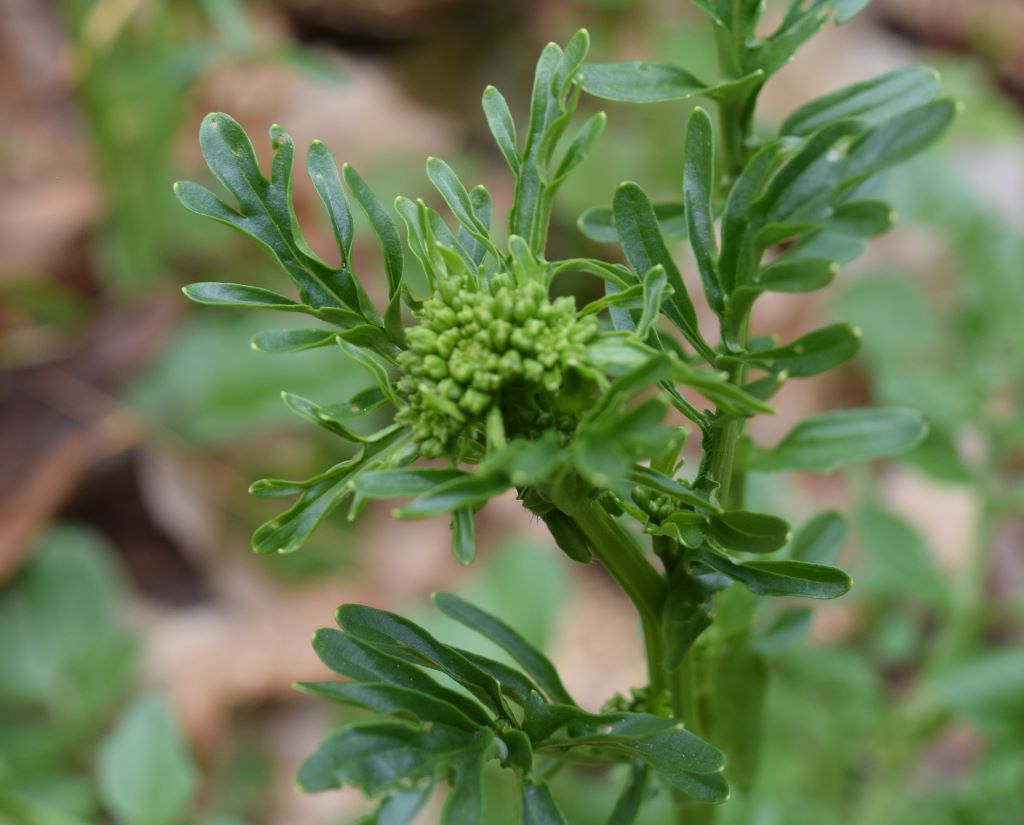Wintercress
Barbarea vulgaris
Brassicaceae
This species gets its common name because it is very hardy and in milder areas it often remains green throughout the winter. It is often common in gardens, waste ground and roadsides.
Greens: Wintercress tastes very much like watercress (Nasturtium) and can be used in the same ways, in salads, sandwiches, soups and as cooked greens. It turns bitter and pungent when it flowers and in hot weather, but can still be eaten if you boil for a few minutes and then change the cooking water (this reduces its bitterness to a palatable level.) It is sometimes mixed with bland potherbs to add flavor. The leaves shrink a lot in cooking, so you need more than you think.

Flower buds: The unopened flower buds, gathered while still tightly furled, can be eaten raw, or cooked like miniature broccoli.
Nutrients: Wintercress is rich in vitamins and other nutrients.
Animal food: The seeds are important food for many wild birds and are sometimes added to wild birdseed mixtures.
Cultivation: This biennial is easily raised from seed, in average garden soil. It can be grown as a cut and come again salad crop. It self-sows readily and can become a weed if not kept under control. I consider it an essential winter salad garden plant. It tolerates light shade.
Related species:
B. orthoceras (B. Americana) – American Wintercress
B. verna – Early Wintercress
These can both be used in the same ways.










